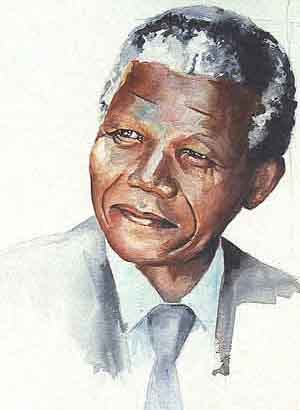The benefits of using speeches by famous figures, in the classroom are:-
a.) The text are normally well prepared, free of grammatical errors and proofread many times before they are finalized. So these speech texts are suitable to be used in the classroom.
b.) The text are normally of persuasive speech. Therefore, if students read more of this type of speech, they can learn the techniques of persuasive speech and apply this particular skill in their real life.
c.) The text normally reflect higher level of critical thinking skills. Therefore, if such speeches are used in the classroom, it might sharpen the critical thinking skills of the students.
a.) The text are normally well prepared, free of grammatical errors and proofread many times before they are finalized. So these speech texts are suitable to be used in the classroom.
b.) The text are normally of persuasive speech. Therefore, if students read more of this type of speech, they can learn the techniques of persuasive speech and apply this particular skill in their real life.
c.) The text normally reflect higher level of critical thinking skills. Therefore, if such speeches are used in the classroom, it might sharpen the critical thinking skills of the students.
2. Go to www.youtube.com and find the audio-visual on the speech. In not less than 50 words, state would the audio-visual be of any use in helping understand the speech better? State your reasons.
Yes. In my opinion the audio-visual is very useful in helping the students to understand the speech better. By wacthing and listening to the speech that presented by a famous person, students will pay more attention and understand better on what the person is talking about. By listening to the audio-visual, students will learn on how they can give a speech more effectively. By using audio-visual, students will also learn to present a speech using the body language, gestures and also having eye contact with the audience. Students will be able to concentrate on the tone of how the speech is given. Through audio-visual, students will get interested in the lesson as well as giving a different way of the teaching and learning process
3. Who is Martin Luther King?
Martin Luther King, Jr. (January 15, 1929 – April 4, 1968) was an American clergyman, activist and prominent leader in the African American civil rights movement. His main legacy was to secure progress on civil rights in the United States and he has become a human rights icon.
4. Based on the questions below, analyse the features of the given written speech:
a. What is the purpose of the speech?
4. Based on the questions below, analyse the features of the given written speech:
a. What is the purpose of the speech?
The purpose of the speech was to send the message to the American government and the white people to stop the racial discrimination and the social injustice on the African-Americans.
b. What is the tone of the speech?
c. What interesting major feature(s) can you see from the speech? (i.e.Repetition of phrases, emphasis on certain things said etc)
“be satisfied" - repeated five times
“negro” - repeated fifteen times
“freedom” - repeated nineteen times
“I have a dream” - repeated eight times
“one hundred years later” - repeated four times
“now is the time” - repeated three times
“free at last!” - repeated three times
“be satisfied” - repeated five times
d. Any interesting facts that you can gather based on the
background of the speech?
5. Suggest a while-reading activity that can be derived from this particular speech.
b. What is the tone of the speech?
The speech had dramatic emotional shifts in tone such as from enraged to cautionary to hopeful. Overall, the speech was eloquent, passionate, intellectual, persuasive and honest.
c. What interesting major feature(s) can you see from the speech? (i.e.Repetition of phrases, emphasis on certain things said etc)
The major feature in the speech is repetition of certain phrases and words. For examples :
“be satisfied" - repeated five times
“negro” - repeated fifteen times
“freedom” - repeated nineteen times
“I have a dream” - repeated eight times
“one hundred years later” - repeated four times
“now is the time” - repeated three times
“free at last!” - repeated three times
“be satisfied” - repeated five times
d. Any interesting facts that you can gather based on the
background of the speech?
I learned that many black people were marginalized and were denied of social justice and equal rights. Many of them were jobless and they were suffering from poverty at that time. They were fighting for their rights and tolerating this situation for more than a hundred years.
5. Suggest a while-reading activity that can be derived from this particular speech.
In a while reading activity, the audio - visual of the speech can be used as a listening text. students will have to listen and write out the main points of the speech based on the questions given.






